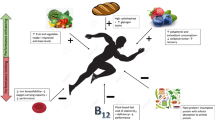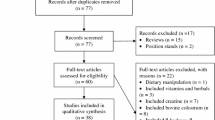Abstract
This study is aimed to evaluate histological features related to the different quality of meat cuts obtained from different pig breeds. We compared animals genetically selected to restore the original local purebred “Nero di Parma” pig, and highly selected fast-growing commercial hybrids. As weight is the main factor determining the time of slaughter, we compared equally weighing animals, sampled from slaughter for edible use, regardless of their age and sex, and immunohistochemically demonstrated the myofibre type composition of their biceps femoris muscle. In both groups we observed type I myofibres, situated as central islets, encircled by type IIA, IIX and IIB myofibres ordered in concentric rings according to the dynamic of their differentiation/maturation. However, the purebred pig muscles contained a smaller quantity of myofibres expressing the MyHC-IIb isoform, related to rapid postmortem glycolytic rate, meat toughness and poorer quality, in comparison to commercial hybrids. This proves that the latter are subjected to a more rapid transition in the expression of the different MyHC, probably as a consequence of genetic selection and breeding conditions, such as different feeding and housing reducing the possibility of continuous physical exercise. Further studies on the postnatal transitions timing of myosin heavy chain isoforms in functionally different muscles of various breeds are necessary to verify if they might be “artificially modulated”, with the aim to design breeding programs allowing a good balance between growth performance, muscularity and meat quality.


Similar content being viewed by others
References
Brooke MH, Kaiser KK (1970) Muscle fiber types: how many and what kind? Arch Neurol 23:369–379
Choi YM, Kim BC (2009) Muscle fiber characteristics, myofibrillar protein isoforms, and meat quality. Livest Sci 122:105–118
Darwin CR (1868) The variation of animals and plants under domestication. John Murray, London
Eggert JM, Depreux FF, Schinckel AP, Grant AL, Gerrard DE (2002) Myosin heavy chain isoforms account for variation in pork quality. Meat Sci 61:117–126
Eizema K, van den Burg M, Kiri A, Dingboom EG, van Oudheusden, Goldspink G, Weijs WA (2003) Differential expression of equine myosin heavy-chain mRNA and protein isoforms in a limb muscle. J Histochem Cytochem 51:1207–1216
Fazarinc G, Vrecl M, Škorjanc D, Čehovin T, Čandek-Potokar M (2016) Dynamics of myosin heavy chain isoform transition in the longissimus muscle of domestic and wild pigs during growth: a comparative study. Animal 11:164–174
Gil M, Oliver MÀ, Gispert M, Diestre A, Sosnicki AA, Lacoste A, Carrión D (2003) The relationship between pig genetics, myosin heavy chain I, biochemical traits and quality of M. longissimus thoracis. Meat Sci 65:1063–1070
Graziotti GH, Ríos CM, Rivero JL (2001) Evidence for three fast myosin heavy chain isoforms in type II skeletal muscle fibers in the adult llama (Lama glama). J Histochem Cytochem 49:1033–1044
Graziotti GH, Rodrìguez Menéndez JM, Ríos CM, Cossu ME, Bosco A, Affricano NO, Ceschel AP, Moisá S, Basso L (2011) Relationship between myosin isoforms and meat quality traits in pig semitendinosus neuromuscular compartments. Asian-Aust J Anim Sci 24:125–129
Graziotti GH, Rodrìguez Menéndez JM, Ríos CM, Galotta JM, Bosco A, Affricano NO, Ceschel AP (2012) Capillary indices in the neuromuscular compartments of the pig biceps femoris muscle. J Anim Prod Adv 2:345–349
Graziotti GH, Ríos CM, Rodríguez Menéndez JM, Affricano NO, Ceschel AP, Bosco A (2014) Anatomical study of pig biceps femoris muscle applied to sampling for assessment of meat quality. J Anim Pro Adv 4:508–513
Hammer Ø, Harper ATD, Ryan PD (2001) Past: Paleontological Statistics Software Package for education and data analysis. Palaentol Electron 4:1–9 http://palaeo-electronica.org/2001_1/past/issue1_01.htm
Hur SJ, Jeong TC, Kim GD, Jeong JY, Cho IC, Lim HT, Kim BW, Joo ST (2013) Comparison of live performance and meat quality parameter of cross bred (Korean native black pig and Landrace) pigs with different coat colors. Asian-Aust J Anim Sci 26:1047–1053
Kauffman RG, van Laack RL, Russell RL, Pospiech E, Cornelius CA, Suckow CE, Greaser ML (1998) Can pale, soft, exudative pork be prevented by postmortem sodium bicarbonate injection? J Anim Sci 76:3010–3015
Kim GD, Ryu YC, Jo C, Lee JG, Yang HS, Jeong JY, Joo ST (2014) The characteristics of myosin heavy chain-based fiber types in porcine longissimus dorsi muscle. Meat Sci 96:712–718
Larson G, Albarella U, Dobney K, Rowley-Conwy P, Schibler J, Tresset A, Vigne JD, Edwards CJ, Schlumbaum A, Dinu A (2007) Ancient DNA, pig domestication, and the spread of the Neolithic into Europe. Proc Natl Acad Sci U S A 104:15276–15281
Lee SH, Choe JH, Choi YM, Jung KC, Rhee MS, Hong KC, Lee SK, Ryu YC, Kim BC (2012) The influence of pork quality traits and muscle fiber characteristics on the eating quality of pork from various breeds. Meat Sci 90:284–291
Lefaucheur L, Edom F, Ecolan P, Butler-Browne GS (1995) Pattern of muscle fiber type formation in the pig. Dev Dyn 203:27–41. doi:10.1002/aja.1002030104
Lefaucheur L, Ecolan P, Plantard L, Gueguen N (2002) New insights into muscle fiber types in the pig. J Histochem Cytochem. 50:719–730
Lefaucheur L, Milan D, Ecolan P, Le Callennec C (2004) Myosin heavy chain composition of different skeletal muscles in Large White and Meishan pigs. J Anim Sci 82:1931–1941. doi:10.2527/2004.8271931x
Maccatrozzo L, Caliaro F, Toniolo L, Patruno M, Reggiani C, Mascarello F (2007) The sarcomeric myosin heavy chain gene family in the dog: analysis of isoform diversity and comparison with other mammalian species. Genomics 89:224–236
Maltin CA, Warkup CC, Matthews KR, Grant CM, Porter AD, Delday MI (1997) Pig muscle fibre characteristics as a source of variation in eating quality. Meat Sci 47:237–248
Maltin CA, Sinclair KD, Warriss PD, Grant CM, Porter AD, Delday MI, Warkup CC (1998) The effect of age at slaughter, genotype and finishing system on the biochemical properties, muscle fiber type characteristics and eating quality of bull beef from suckled calves. Animal. Science 66:341–348
Ozawa S, Mitsuhashi T, Mitsumoto M, Itoh N, Itagaki K, Kohno Y, Dohgo T (2000) The characteristics of muscle fiber types of longissimus thoracis muscle and their influences on the quantity and quality of meat from Japanese Black steers. Meat Sci 54:65–70
Pette D, Staron RS (2000) Myosin isoforms, muscle fiber types, and transitions. Microsc Res Tech 50:500–509
Porter V (1993) Pigs. A handbook of the breeds of the World. East Sussex Helm Information Ltd, Mountfield
Prosciutto di Parma (Parma Ham) Protected Designation of Origin Specifications (subject to temporary protection) (Specifications and Dossier pursuant to Article 4 of Council Regulation EEC no. 2081 92 dated 14 July 1992) (1992). http://www.prosciuttodiparma.com/pdf/en_UK/Specifications.pdf. Accessed 26 July 2016
Rozzi U (1934) L’allevamento suino in provincia di Parma. Tipografia Pestelli Godi, Parma
Ruusunen M, Puolanne E (2004) Histochemical properties of fibre types in muscles of wild and domestic pigs and the effect of growth rate on muscle fibre properties. Meat Sci 67:533–539
Ryu YC, Kim BC (2005) The relationship between muscle fiber characteristics, postmortem metabolic rate, and meat quality of pig longissimus dorsi muscle. Meat Sci 71:351–357
Ryu YC, Kim BC (2006) Comparison of histochemical characteristics in various pork groups categorized by postmortem metabolic rate and pork quality. J Anim Sci 84:894–901
Ryu YC, Rhee MC, Kim BC (2004) Estimation of correlation coefficients between histological parameters and carcass traits of pig Longissimus dorsi muscle. Asian-Aust J Anim Sci 17:428–433
Ryu YC, Choi YM, Lee SH, Shin HG, Choe JH, Kim JM, Hong KC, Kim BC (2008) Comparing the histochemical characteristics and meat quality traits of different pig breeds. Meat Sci 80:363–369
Schiaffino S, Reggiani C (1994) Myosin isoforms in mammalian skeletal muscle. J Appl Physiol 77:493–501
Schiaffino S, Gorza L, Sartore S, Saggin L, Ausoni S, Vianello M, Gundersen K, Lømo T (1989) Three myosin heavy chain isoforms in type 2 skeletal muscle fibres. J Muscle Res Cell Motil 10:197–205
Smerdu V, Karsch-Mizrachi I, Campione M, Leinwand L, Schiaffino S (1994) Type IIx myosin heavy chain transcripts are expressed in type IIb fibers of human skeletal muscle. Am J Physiol 267:C1723–C17238
Smerdu V, Strbenc M, Meznaric-Petrusa M, Fazarinc G (2005) Identification of myosin heavy chain I, IIa and IIx in canine skeletal muscles by an electrophoretic and immunoblotting study. Cells Tissues Organs 180:106–116
Smerdu V, Cehovin T, Strbenc M, Fazarinc G (2009) Enzyme- and immunohistochemical aspects of skeletal muscle fibers in brown bear (Ursus arctos). J Morphol 270:154–161
Strbenc M, Smerdu V, Zupanc M, Tozon N, Fazarinc G. (2004) Pattern of myosin heavy chain isoforms in different fibre types of canine trunk and limb skeletal muscles. Cells Tissues Organs 176:178–186.
Talmadge RJ, Grossman EJ, Roy RR (1996) Myosin heavy chain composition of adult feline (Felis catus) limb and diaphragm muscles. J Exp Zool 275:413–420
Tanabe R, Muroya S, Chikuni K (1998) Sequencing of the 2a, 2x, and slow isoforms of the bovine myosin heavy chain and the different expression among muscles. Mamm Genome 9:1056–1058
Toniolo L, Patruno M, Maccatrozzo L, Pellegrino MA, Canepari M, Rossi R, D’Antona G, Bottinelli R, Reggiani C, Mascarello F (2004) Fast fibres in a large animal: fibre types, contractile properties and myosin expression in pig skeletal muscles. J Exp Biol 207:1875–1886
Weiler U, Appell HJ, Kremser M, Hofäcker S, Claus R (1995) Consequences of selection on muscle composition. A comparative study on gracilis muscle in wild and domestic pigs. Anat Histol Embryol 24:77–80
Author information
Authors and Affiliations
Corresponding author
Ethics declarations
Funding
This research was supported by the Research Project Grant FIL 2014—University of Parma.
Conflict of interest
The authors declare no conflict of interest.
Ethical approval
All applicable international, national, and/or institutional guidelines for the care and use of animals were followed. However, the ethical impact of this experimentation is low due to the fact that we used animal samples from slaughter for edible use.
Rights and permissions
About this article
Cite this article
Ragionieri, L., Ivanovska, A., Pendovski, L. et al. Influence of genetic selection on the myofibre type composition of porcine biceps femoris muscle: a comparative study of a purebred (Nero di Parma) and commercial hybrid pigs (Large White × Landrace × Duroc). Zoomorphology 136, 279–285 (2017). https://doi.org/10.1007/s00435-017-0346-y
Received:
Revised:
Accepted:
Published:
Issue Date:
DOI: https://doi.org/10.1007/s00435-017-0346-y




